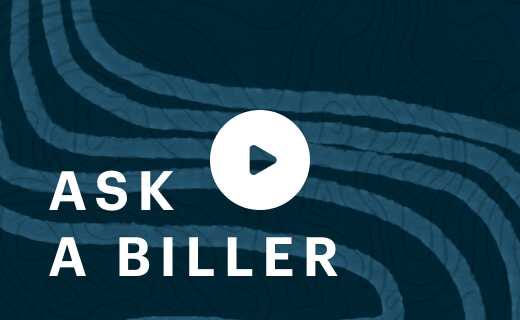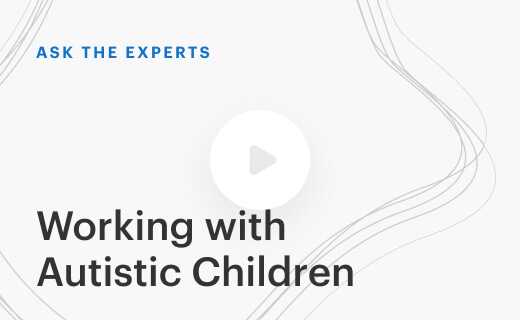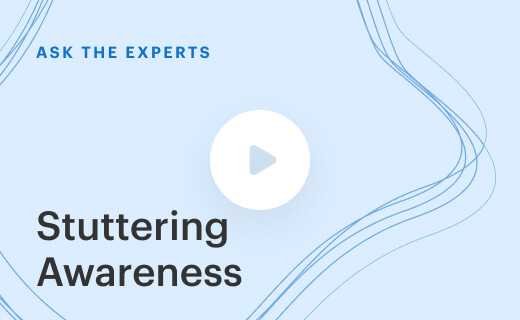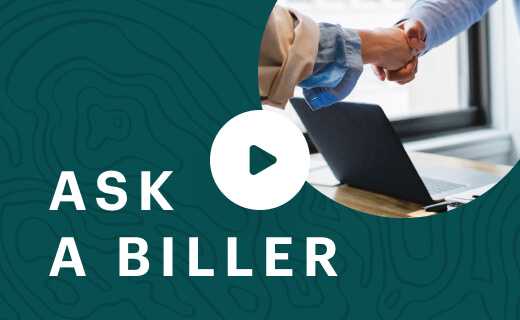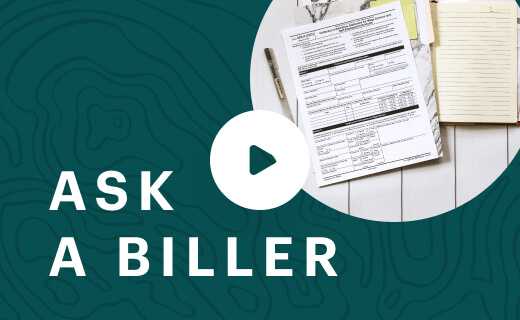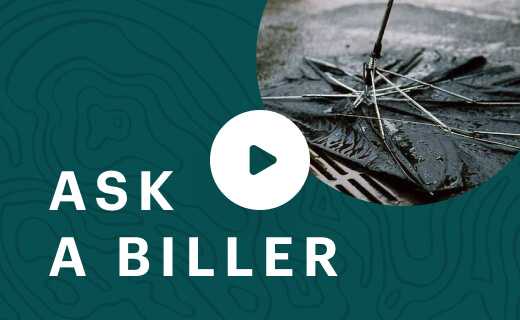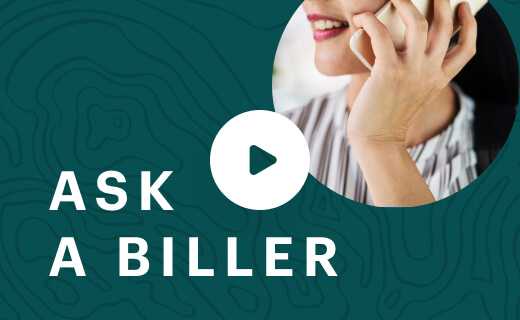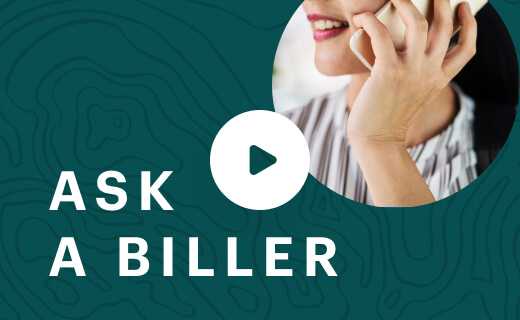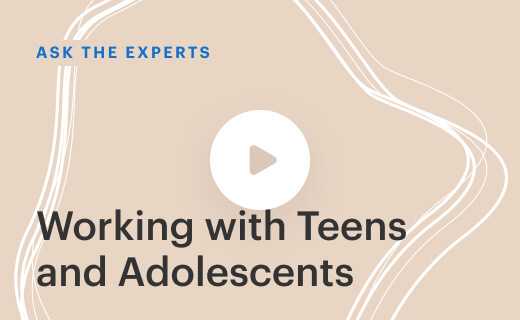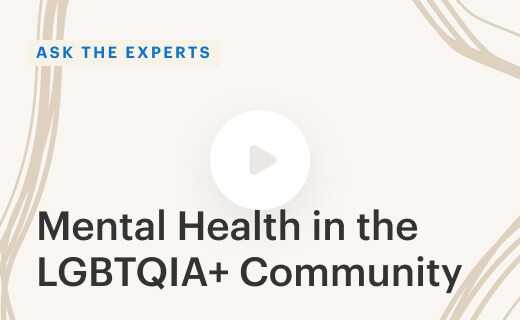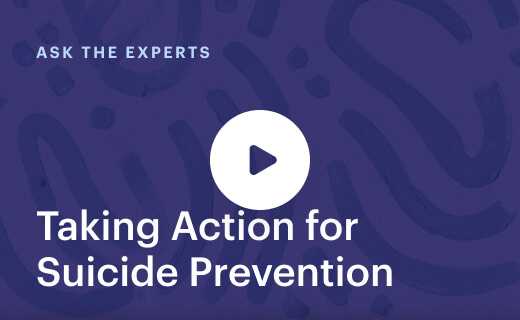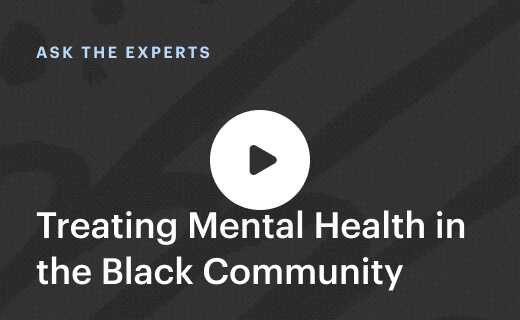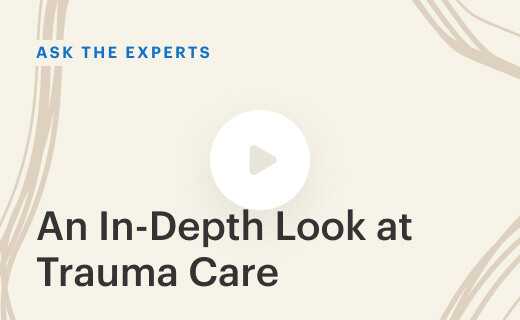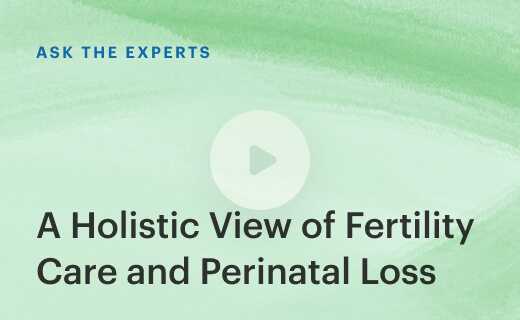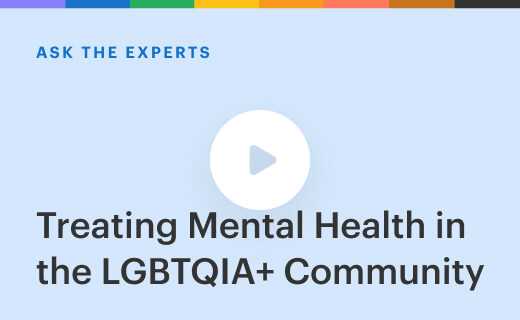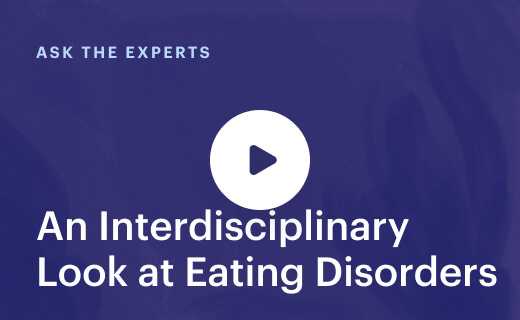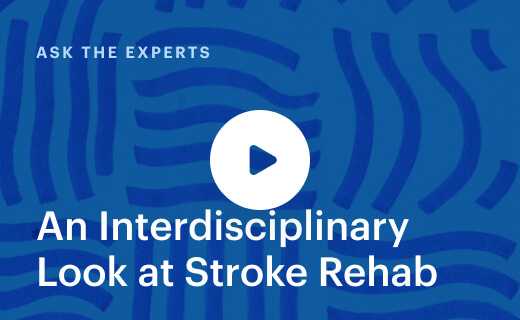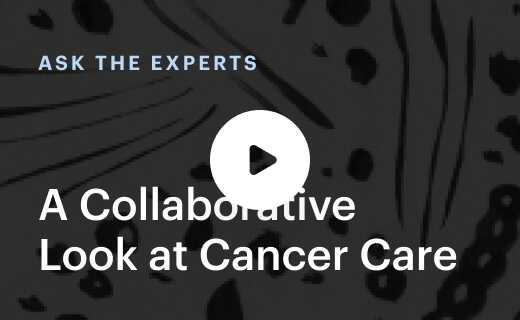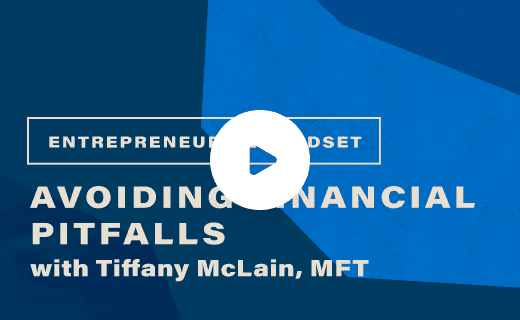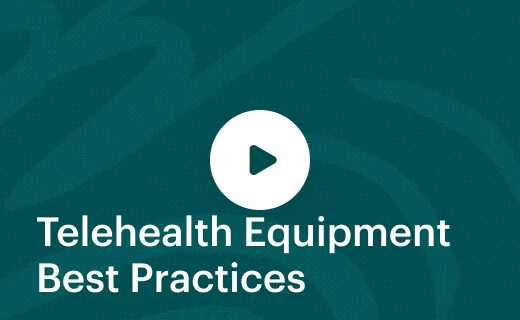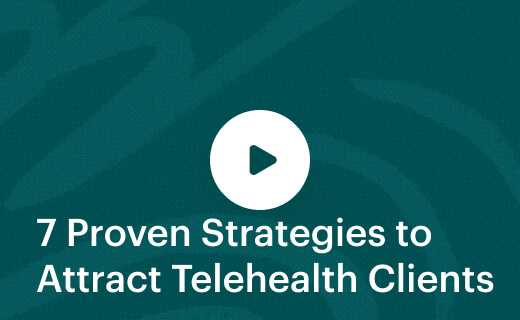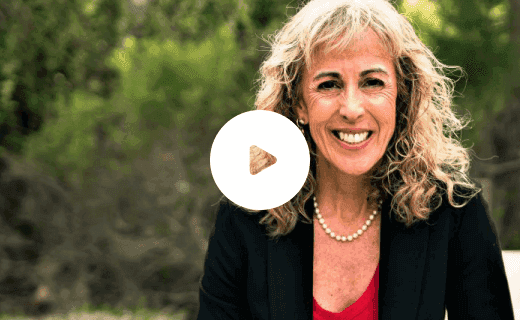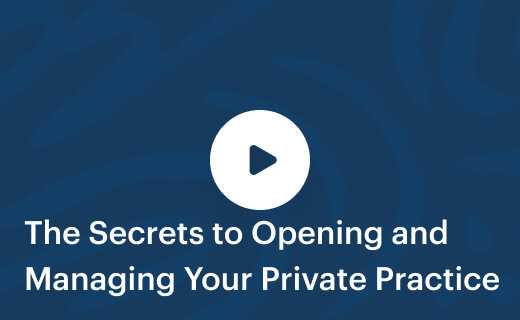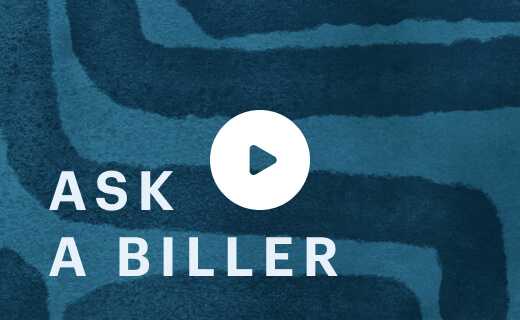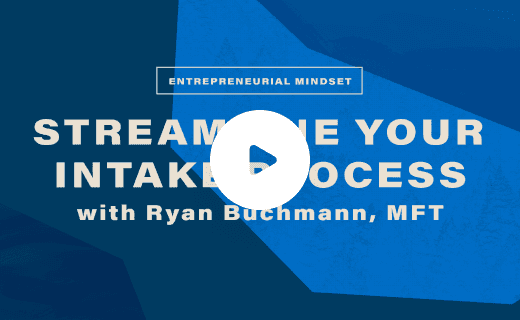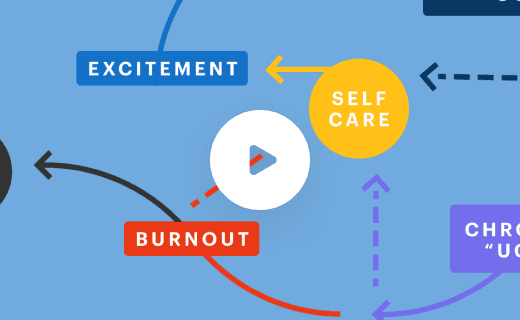An In-Depth Look at Couples Therapy
Free 30-day trial, access all this & more:
Want to know about other great webinars?
Join Dr. Stan Tatkin, PsyD, Dr. Faith Drew, and Adrienne Clements, LMFT as they discuss what you should know about offering couples counseling, and some best practices for relationship therapists.
Moderated by Dr. Ben Caldwell, this group of experts have the knowledge and insight you need to learn about everything from telehealth appointments for couples therapy, to supporting couples who are in the midst of a divorce and plan to co-parent together.
If you’ve ever been interested in working with couples, this webinar has everything you need to know about how to get started, and what to expect when working with couples of all types.
- Introductions
- How has going to remote work impacted your work with couples? Are there specific modifications or resources that you’ve made use of?
- For those of us who do not have experience with PACT, could you explain it to us, and how do we get started?
- When starting off providing couple therapy, what would you recommend as the basic foundations for learning?
- What are some common and important issues to address in supporting couples during the pandemic?
- What screening and assessment tools do you use for couples as part of the intake process?
- What are your thoughts on individual counseling to supplement the couples therapy sessions?
- What are your best recommendations for dealing with high conflict couples?
- What do you think is most important for people who want to do more couple therapy to take on in themselves, to develop in themselves if they really want to be effective in doing this work?
1. Introductions
Benjamin E. Caldwell: Good afternoon. Welcome, everyone, to today’s Ask the Expert webinar from SimplePractice. Our focus today is an in-depth look at couple’s therapy. We’ve got some amazing clinicians here to share their wisdom this afternoon for the next hour. That’s me on the education record here for SimplePractice Learning, but we didn’t come here for me. You came here for the expertise that we will have over the next hour or so.
So, you can see on this slide what our agenda is for today. We’ll do some brief introductions of our speakers. We will get into some pre-submitted questions. We’ve got some great questions lined up today. I’m really excited about those, and then in the remaining time we’ll get final thoughts from each of our experts with us today. Just as a reminder for everyone in attendance, we are making a recording of this webinar. So, this will be available to you. We’ll send out the recording within about a day after we close up this afternoon.
We’ll be with you for the next hour or so. We hope you find a lot of benefit in that time, and we’ll start with introductions. Dr. Faith Drew is an LMFT in multiple states. Faith, would you like to tell us a little bit about your practice?
Dr. Faith Drew: Hi, everyone. I am so honored to be part of this group. So, I own a private practice, I own two. One is really focused on couples called Connect Couples Therapy. We’re based out of Charlotte, North Carolina and recently we opened up an office in Scottsdale, Arizona. I’m in practice with my husband who’s also a therapist, and then we also have another practice called In Session Psychotherapy. So, for that question I will answer later on whether or not individual therapy is relevant in couples work, I can definitely talk to that one.
Benjamin E. Caldwell: Sounds good, thank you. We’re very happy to have you with us.
Dr. Faith Drew: Thank you.
Benjamin E. Caldwell: Adrienne Clements is also an LMFT, specializing in trauma and relationships. Adrienne, would you like to tell us a little bit about your practice?
Adrienne Clements: Yeah, absolutely. I’m an integrative trauma and relationship therapist. I’m based out of Austin, Texas and run a practice that specializes in supporting adults and couples to navigate what I just like to call the continuum of major stressors, from everyday stress to chronic illness, to trauma including complex PTSD and developmental trauma and then also to relationship challenges. So, it’s an honor to be here today, excited to chat.
Benjamin E. Caldwell: Thank you, Adrienne. And then finally, Dr. Stan Tatkin. You may be familiar with his work on PACT. Stan, do you want to tell us about your work and your practice?
Dr. Stan Tatkin: Well, hello, everybody. I’m glad to be here. I’m Stan Tatkin, developer of a psychobiological approach to couple therapy and co-founder of the PACT Learning Institute, and I have a private practice here in the Los Angeles area, and I teach worldwide and write and I’m a researcher as well as a clinician.
Benjamin E. Caldwell: Very happy to have you with us. I was telling you before we came live here, my wife, who’s also an MFT, knows you from way back when and speaks very, very highly of you, and of course, plenty of folks who are familiar with your model also like to share great stories about you and their work with you, so very pleased to have you with us today. We’ll talk a little bit more about the PACT model as we go, but wanted to start with a question that I think has been a struggle for every couple therapist in this time of telehealth which is essentially, how has going to remote work impacted your work with couples? Are there specific modifications or resources that you’ve made use of? Every couple therapist I know has talked about the transition to telehealth as being a very challenging one. A lot of the research on telehealth is based on individual work. So, how have each of you adapted? And, I’ll ask each of you to share your thoughts here. Faith, I’ll start with you, and then Stan, and then Adrienne.
2. How has going to remote work impacted your work with couples? Are there specific modifications or resources that you’ve made use of?
Dr. Faith Drew: Great. Definitely changing to remote work has made everyone become creative. One of the ways that we’ve changed one of our services, so I present the Art and Science of Love with the Gottman Institute, and we’ve had to do all of that virtually now. They used to do it up in Seattle. We’ve also done locations in Charlotte, but because of this last year, we’ve made that modification to do it all virtual, which has been really fantastic because couples all over the globe have been able to log in from the comfort of their home.
So in some ways, it’s been really nice and accommodating to those families that perhaps weren’t able to travel to one of them to know being able to do it in their home. They can unmute or turn the video off if they have young kids and attend to them, so they’re getting the benefit because of the remote shift. So, I think that’s been one benefit and one creative way to find a solution because of all of this.
Benjamin E. Caldwell: Absolutely. Stan, what about you?
Dr. Stan Tatkin: Well, I was not a proponent of telehealth until COVID. I would tell my students, “It’s not a good idea because we pay so much attention to the body, to somatic reactions, micro expressions, and micro movements that being in person seemed to be the only way to really regulate a couple, but hey, things changed, and now I’m converted. There are a lot of things to be said for telehealth, being able to move in and to be able to use the camera for face and use the microphone, a lot of things that I can do that I wasn’t able to do in person.
There are some limitations like not being able to see the body, not being able to stage things and have people move around, but I get to see people’s homes, I get to see their kids, I get to see their pets, where they live. I get to use their furniture for staging instead of mine. So, there are limitations and then there are also really some great benefits, and so it took a while for me to get my sea legs, and I did go through a bit because there’s now been some research on aggressiveness in Zoom when you’re looking at a face close up for long, long periods, staring into the face through a television screen.
So, there are countertransference stuff that I had to learn through this, but it’s been all in all… I wouldn’t say there’s anything fortunate about COVID, but being able to pivot and being able to adapt during this period has been really remarkable.
Benjamin E. Caldwell: Thank you. Adrienne, what about you? How have you adapted? And, I’m going to ask you to specifically to kind of follow up with something that Stan said. Now, a lot of what I think couple therapists do is modulating your voice and kind of moving your body in and out and even doing hand gestures and things to sort of slow down or stop conflict. How do you do those things in a telehealth environment?
Adrienne Clements: Well, first I’ll say for me, I’ve been doing telehealth since the beginning of my private practice. For me, it was an accessibility issue. I specialize in chronic illnesses, for many people that makes it impossible for them to come to my office. And so, I also specialize in a few complex chronic illnesses, and so people from all over the state were then able to access somebody who understood about their illness in a different way. So for me, telehealth has always been important in terms of accessibility.
So, I’m really excited that everybody got to try it this year. I think that’s the silver lining underneath this is that now more people are going to have access to therapy who might not have it otherwise, and speaking to what you’re talking about there, for me, I use all the same things that I would with a couple in session. Just like Stan was talking about there, leaning in and out, shifting the prosody of your voice. I am a hand gesture person, so I do hand gestures all the time in my sessions with clients and I do modeling and things with my hands.
So, I think some of it is really how comfortable you are on the platform and allowing your natural, authentic personality to come through and really just seeing this as a tool, and the more time you spend in front of it, the more natural it becomes. I do things with my clients all the time where I actually ask them to adjust straight where they’re placing it, so I can see both of their bodies.
For me with couples, I prefer that both people are in the same room together, so they’re getting that nervous system response from one another and they’re getting to experience that activation and that regulation and they’re positioned into place where I can see their bodies, and if I can’t, I simply ask them. I’m saying, “Hey, I’m sensing a little bit of tension or something going on here. Can you show me or tell me what you’re experiencing in your body right now?” So, it becomes where you have to be a little bit more curious with them and maybe asking some more overt questions to get that feedback, and it’s the same as what you would do if they were in person.
Benjamin E. Caldwell: Well, thank you. A friend of mine who’s a couple therapist was telling me a few days ago about a couple that she had been working with where the therapist thought things were going pretty well, and then the couple started connecting with the telehealth sessions separately from different rooms in the house, and she thought that might be a clinical indicator that things were not going as well as we would hope. That’s all very, very helpful, so thank you all.
Next question is for Stan. For those of us who do not have experience with PACT, could you explain it to us, and how do we get started? Now, I know that you lead workshops for extended periods on the topic. So, your challenge here, should you choose to accept it, can you summarize PACT in a quasi-brief way? But, I think part of the point here too is for people who do want to learn more and want more in-depth engagement around PACT, where do they go to find that?
3. For those of us who do not have experience with PACT, could you explain it to us, and how do we get started?
Dr. Stan Tatkin: To thepactinstitute.com is where you can find the training programs that we do internationally, we now do them online because of COVID, and they’re great. They’re dense, it’s being in grad school because you’re learning neuroscience, you’re learning how to read faces and bodies, you’re learning about attachment, infant attachment, developmental psychology, we’re doing trans work, we’re doing all sorts of things, psychodrama. And so, it’s a polytheoretical, non-linear approach, which means it takes time to learn. It takes a lot of repetition, but it’s fun. It’s a lot of fun.
Psychobiology is basically the study of infant brain development and development throughout the lifespan, so we’re developmentalists in the sense that we’re concerned about how the brain develops, the social-emotional system develops what people can and can’t do in their interactions, and we’re basically studying the whole human in the room, including medicines and physical health and so on, and trauma, just like Adrienne, I’m fascinated with the stuff you do working with trauma-related health issues.
Adrienne Clements: Same. That’s so important. PACT has been revolutionary and I think we’ll go into some of the other questions with PACT.
Benjamin E. Caldwell: Yeah, absolutely.
Dr. Stan Tatkin: There’s a huge connection between the work we do with couples and the mental and physical health and longevity that’s been well-studied. And so, our scope really is appropriate to broaden it, that we’re not just dealing with conflicts, we’re dealing with real health issues that can make or break people’s lives, happiness, and health.
Benjamin E. Caldwell: Thank you, and we’re going to talk some as we go here about some other approaches as well. It’s been I think fascinating over the past 20, 30 years to see how the science around couple relationships has really meaningfully developed and taught us a lot more about how to work effectively with couples in distress. So, thank you, I know it’s hard to summarize an entire model briefly, but I think you did a pretty good job there, thank you. Our third question, when starting off providing couple therapy, what would you recommend as the basic foundations for learning? Adrienne, I’ll start with you here, and then Faith, and then Stan.
4. When starting off providing couple therapy, what would you recommend as the basic foundations for learning?
Adrienne Clements: Well, I think we’re all now familiar with the buzzword of attachment theory. It’s a big part I know of Dr. Tatkin’s work and pretty much all of the great couples therapies are using attachment theory. So, if you’re not familiar with it, or if you just dove into it a little bit, get more comfortable with it, start learning about those attachment styles because you’re going to see them show up in your work, and it’s going to influence the patterns there.
But, I also want to remind people, if you haven’t done couples or systems work before, it can get really overwhelming, the content that might come at you at the beginning. Couples often come in at a place where things have built to a certain level, and then it’s just going to burst out at you. And so, the basic is to remember basic family systems therapy. Focus on the process, not on the content. The pattern is the problem, not the person. Focus on what the dance is that’s happening between these two people, what the role is that they are in in that dance, and how their stress response plays into it as well, which is that attachment style. So, I always say, when you’re lost, go back to the pattern and focus on the pattern and naming the pattern out will help.
Benjamin E. Caldwell: Thank you. Faith, what about you?
Dr. Faith Drew: I think that’s all right with the attachment things, and just really understanding that well. I think the way that I contribute is having three books on your bookshelf that are really key. The first one, because I’m a big Gottman person, I love the Seven Principles for Making Marriage Work by Dr. John Gottman. I think that’s a really lovely one. I also think another one is Hole Me Tight by Dr. Sue Johnson, and then I’d like to add the Wired for Love by Dr. Stan Tatkin. I think they’re all really helpful in understanding the dynamics within that relationship, more of that systemic perspective.
I also think another tip from a therapist perspective is knowing, what are the goals that the couples coming in for therapy for and getting a really clear sense that just because they’re there doesn’t mean that they want to be there, so figuring out what’s the goal for them coming, and having that goal alignment from the very beginning because it’s really hard a couples therapist. Sometimes I fantasize about closing up shop and just scooping ice cream for a living because that would be so much easier making people happy all the time because couples work is really hard because you’re wanting to please two people and sometimes that doesn’t happen.
So, if you’re able to really align everyone towards the common goal, it makes it a little bit easier and less frustrating overall, and then I think the only other bit of advice would be there’s a lot of great work out there. Pick one model, learn it really well, and then go from there in learning other ones because it’s going to take a lifetime of learning how to do this well, and it’s an enjoyable one, but that would be my contribution to this question.
Benjamin E. Caldwell: Thank you, I’m going to follow up with you in just a minute about one thing you said there, but first I want to get Dr. Tatkin’s response here. What would you recommend as a foundation for learning?
Dr. Stan Tatkin: I agree with both of you, everything you said. When I first saw a couple I was a trainee and I was horrified, it was a couple from hell and they scared the hell out of me, and I thought I would never do couples. I love it, and it is a matter of immersing yourself and just doing so much of this is the repetition of doing something is a specialization. I don’t recommend that people dabble in it. There’s something about the complexity of numbers that’s different when you’re dealing with two people as opposed to three or four or just one. Everything’s different, and one gets to understand the waters or feel familiar with the waters they swim in, and by doing it, you start to learn yourself by working in that system, but I also agree that learning one approach really well is seminal to understanding everything.
Just really understanding, immersing yourself, committing to one approach and then you start to understand every other approach. It’s interesting how that works, and also enjoying it. I went into the work by way of prevention. I wanted to work with caregiver infant pairs to prevent mental illness, and I couldn’t get enough people in that population. I find that working with adult couples actually helps to prevent problems with children. And so, it satisfies for me everything I want and it’s always interesting and never a dull moment, and I think it’s a great field to go into.
Benjamin E. Caldwell: And, that never a dull moment idea is one that I think I’ve heard from every couple therapist I’ve ever spoken with.
Dr. Stan Tatkin: And, I fall in love with my couples as probably you guys do too.
Benjamin E. Caldwell: Dr. Drew, I wanted to come back to you because you had mentioned this challenge that I’m sure you all experience, about couples who don’t necessarily have the same goals when they first come in, and that could be either in terms of what they’re even there for, and then there’s discernment counseling, that approach from Bill Doherty about about how do you help couples kind of sort out what are we even here to do, but if you’ve got a couple where they have different ideas of success or different ideals about what their relationship should look like, how do you go about getting them on something approaching the same page?
Dr. Faith Drew: That is still something I seek with those couples that come in with very different agendas. So, I get regular consultation, even though my license here doesn’t require that, I do a deliberate practice approach, and that’s one thing that I’ve learned from my coach is about that goal alignment and task alignment, and it is difficult.
So, what I’ve learned to do is just name it out loud. Partner A, I feel this is kind of what you would like, is that correct? Partner B, this is what I hear you want, is that correct? Those two seem very different from each other. Help me with this. So, I don’t take it on as my own problem to solve for them even though maybe they see me as the expert, but I really work with them to say, how do we come to grips with two different values or two different opinions? Might this be part of the problem? And so, that’s kind of my angle at how I take it and it’s helped relieve that pressure off of me to fix it for them, and that’s been a game changer when it comes to my work.
Benjamin E. Caldwell: Well, that goes with what Adrienne was saying earlier as well about calling out process rather than particular content. If you can just point out that there is this difference and talk about how they manage that difference, maybe that’s the work and not the actual resolution thereof, but the process of how they talk about it.
Dr. Stan Tatkin: I find also that it’s never really money, time, sex, or kids, it’s always founded in the interactions. The interactions that repeat again and again kind of the ghost in the machine that is actually the problem most of the time, not the content and not the subject matter.
Benjamin E. Caldwell: Our next question comes from Canzi who asks, what are some common and important issues to address in supporting couples during the pandemic? During this sort of unique time that we’ve all gone through together over the past year, has it changed what you’ve been working with couples on and some things that you’ve found yourself needing to highlight and take on with them that you maybe didn’t have to before? For this one, Stan, I’ll start with you, and then Adrienne, and then Faith.
5. What are some common and important issues to address in supporting couples during the pandemic?
Dr. Stan Tatkin: The pandemic is an opportunity, I think, for couple therapists to use a real life situation of threat that exists and always existed in the outside world. It’s the pandemic, but it could be a meteorite, it could be another pandemic, it could be a collapsing economy. There’s always been something and people across the world and across time have realized at different times that there’s a reason we cluster together and that is to protect each other from the environment, protect each other from the indifference of life.
And so, this is a time, I think, where people can either discovery what’s really important with relationships maybe the most, I think, the most important thing, and that those who can make the adjustment and start to see the need to have a shared purpose, a shared reason for being, not about love, but about what we’re going to do for each other in real life terms, safety and security, vitality, affection, healing, all these things that two people can decide to do, but they have to decide to do it, and they have to see each other as mutual stakeholders.
So, the therapist can really now bring home the idea of, why are you doing this? What’s the point of you? What’s the pay off? What principles do you have to protect yourselves from each other and everybody else? This is time to think and plan and predict and to really structure what this culture is going to be. Is it going to be yours and yours alone, or is it somebody else’s?
And so, I think this is a good time to use the crisis to accentuate the importance of people growing up and being principle-based, which is becoming a better person, using each other properly in a way that’s fair and just and sensitive. So, that’s where I come down on making use of this.
Adrienne Clements: I love, Dr. Tatkin, that you’re almost seeing it as like a crisis of awakening for couples where they can explore that together and go deeper into their values and assess that and I think that’s so important about some couples who are there, and then I’ve got couples who I’ve noticed have been on the other end of the stress continuum in that way, especially in my couples where either one or both partners have complex or developmental trauma or there’s neuro-divergencies that are showing up there, ADHD, autism, under this we’re kind of in a pressure cooker of stress right now, and life doesn’t stop happening within a pandemic.
So, people are navigating personal loss and trauma inside of our collective loss and trauma, and I think going back to what you said, that felt safety, the nervous system is checking four times every second, I think is what they say. Is it safe or is there a threat? All of this is going on. The nervous system can’t necessarily get to a place of feeling safe, and where does that tend to come out, those fight, flight, or freeze responses within the relational dance of two people and the fact that many of us are kind of trapped in our home with our significant other. As much as you maybe love them with your whole heart, they’re still probably going to get on your nerves spending 24/7 together in this.
So, I’ve been noticing an escalation in some couples of their stress responses coming out and sometimes when our stress response takes over we lose that access to our prefrontal cortex where all those nice tools and skills we have learned are, and so I’ve been finding with some of my couples I’m having to kind of go back to basics with them and do that really deliberate active role of a therapist and coaching and helping them notice what’s happening within their nervous system, noticing how people are getting a little bit more perpetual problems that tend not to bother them that much on a day to day basis, but inside this pressure cooker they feel so much bigger.
And so, it’s really been about doing psychoeducation on what’s happening in our nervous system. Where are we on that polyvagal ladder because you’re not up in the safe and social zone right now, and how can we get you back up to there? What does your nervous system need? Reminding people to go and do individual self-regulation before they’re coming back with their partner as well if things are too heated, and working with all of those little pieces. So, I’ve been finding it’s very necessary to go back to basics and then also honor what’s been happening in the world and really name that because I think some couples come in and they’ve got their blinders on to the perpetual problems that they forget what’s influencing why they feel so much bigger than they do at other times.
Benjamin E. Caldwell: You mentioned something there that I’ll come back to in a moment, and I know a lot of our attendees are going to have some interest in about neuro-divergence and what it’s like working with a couple where maybe one partner has some elements of maybe spectrum disorder or some other neuro-divergence that is impactful on their relationships. So, I want to put a pin in that for just a second. Dr. Drew, what has your experience been like in terms of addressing particular issues with couples during the pandemic and how that’s changed?
Dr. Faith Drew: I think the way that I could add to this is I see when couples come in they’re definitely more in a state of crisis, and what’s helpful is to help them understand we’re not shooting for a gold medal here, so it lessens some of the expectations to make them manageable. So, what’s really helpful is coming up with ways that things can be more practical for them, be more concrete and even get to conversations around what’s meaningful to them, can they even hear each other, can they even understand, and then work towards some kind of temporary compromise.
And again, I know that this sounds really terrible to say lessen expectations, but I find that would a lot of couples in crisis giving them permission to just lessen some expectations right now when it comes to childcare, working from home, not having a lot of the avenues of escape that they usually had, not being able to see friends and families, that actually helps reduce some of the anxiety and then we can do a little bit more work around that knowing that once things maybe change, we can then start working towards that medal, but lessening expectations has definitely been helpful right now.
Benjamin E. Caldwell: And, I can see where for a lot of couples it would be unusually challenging to expect that you’re going to have this fantastic, deeply passionate marriage on a daily basis while you’re also working multiple jobs, then trying to be a full time homeschool teacher and all of this other stuff that is now sort of piling up on top of couples. So, I really like that about making sure their expectations are in line with reality. Adrienne, you’ve mentioned about neuro-divergence, and I’m curious, and I don’t want to take too long on this, but I’m curious about your experience with couples where maybe one partner has a diagnosis of ADHD or has some level of spectrum or is functioning at some level on the spectrum, how do you adapt your approach to couple therapy in those instances?
Adrienne Clements: Absolutely, thank you for asking this question because this is a passion of mine, and I think it’s so important as therapists that we’re learning more about the neuro-diversity movement, becoming neuro-diversity affirming in our work because neuro-divergents and neuro-typicals communicate in different ways, and one of the things I’ve noticed in my work is I have a lot of couples who come to me who’ve seen other couples therapists in the past and things didn’t quite work, and what we discover is sometimes they don’t even realize they’re neuro-divergent because they might not have ever gone to therapy before. They might have been misdiagnosed with something else.
ADHD, what many people don’t realize, it’s much more about emotional regulation than it is about attention issues. It’s much more about that, and so that can show up in a dance and you can wonder, what’s going on here? Is this actually an attachment issue? It actually could be some neuro-divergence in terms of emotional regulation playing out. So, exploring that with clients, that’s one of the things that when I know somebody has that, they disclose that diagnosis to me we talk about it openly. We do psychoeducation, psychoeducating the neuro-typical partner if it is a neuro-diverse relationship or one’s neuro-divergent, one’s neuro-typical on those communication differences, realizing it’s not to be offensive or insensitive.
Autistic people tend to be very literal and blunt in their communication and it’s not to be offensive, it’s just how it is, but a neuro-typical person may take that in a completely different way, which can lead to this pattern of an escalating fight with a neuro-divergent person going, “I don’t know what I did, but my partner is really upset at me all the time and it sucks for them to be mad at me all the time.” And, then the neuro-typical person over here frustrating saying, “I don’t know how to change, I don’t know how to make this right.”
So, I think psychoeducating on that pattern, learning about different neuro-types and empowering the couples around that is so important. There’s some great books that have come out recently. There’s one called Aspergers in Love. Aspergers is not the name that we use any further, but many people in the autistic community appreciate and use that label. And so, the person who wrote this is a psychologist who is actually autistic herself, and so she can speak from that and she has a lot of great case studies within that book as well and there’s also a great online Facebook group for therapists called Neurodiversity Affirming Therapists in there.
And, a lot of the therapists themselves are neuro-divergent, many are neuro-typical as well, but it’s a place to come and learn about how to be neuro-diversity affirming, how to work with different neuro-types in the session, and to kind of open up our eyes to maybe some of the ways that we unfortunately in the counseling field have neglected or even hurt different neuro-types in our work because of not understanding some of those differences.
Benjamin E. Caldwell: That’s very, very helpful. Thank you. I want to move us to our next question here from Steve, what screening and assessment tools do you use for couples as part of the intake process? Stan, I’ll start with you and then Faith and then Adrienne.
6. What screening and assessment tools do you use for couples as part of the intake process?
Dr. Stan Tatkin: Well, I use a fantastic service called SimplePractice.
Benjamin E. Caldwell: I’ve heard of them.
Dr. Stan Tatkin: I know, and that’s allowed me to have a lot of electronic forms that help me screen for certain things like domestic violence, drugs, alcohol, history of mental illness, suicidality, and so on. Much of that information I still like to get when I interview people because what people say on a form is different than how they say it when you’re talking to them. So, I just get the basics from that. I also, because I’m doing research, I have a certain set of questions that I ask about secure functioning of the couple, that is are they fully transparent with each other, do they put their relationship first, where is that in their priority list? Do they protect each other in public and private? This is questions about, do you think your partner does? And, it’s rated. How much do you think you do? So, I can compare those two. That gives me a heads up a bit in terms of the health of the relationship, also a measure. The rest of it I do face to face.
Benjamin E. Caldwell: Some of those questions, Stan, are those in a formal assessment, like if somebody was interested in using that kind of a questionnaire, is there a term that’s googleable that they could use to find it?
Dr. Stan Tatkin: It’s within our community, the PACT community at this moment, unless you understand what secure functioning is, and that is something that is your narrative. That’s the only thing we do. We expect secure functioning in this life or the next because it’s the only thing that will ensure a long-lasting relationship. So, it is particular to this approach and we’re using it right now as a research tool and as a way to measure our success, but if people are interested, they can email the PACT Institute. It’s not proprietary. We want everybody to be thinking this way.
Benjamin E. Caldwell: Great, thank you.
Dr. Faith Drew: That’s great. One of the assessment tools that I use in my practice is the Gottman Connect, that’s the Relationship Checkup. It used to be the Relationship Checkup, so for those of you that have been using that, they’ve upgraded it to Gottman Connect and it’s really nice. Way back when, if you guys started doing some Gottman stuff, it was the paper and pen version and it was like this thick and it took hours to score and all of that, but they’ve really done a beautiful job within this last year to upgrade it.
It’s 30% less questions for the clients, which is so nice. It does cost about $5 more than what the Relationship Checkup used to be, but it’s worth it hands down because with this version, you get a really nice layout of the client’s responses, and it really does screen everything from domestic violence, alcohol substance use, the overall commitment. They do a whole workup. They show the Sound Relationship House, which is the main theoretical model of the Gottman Model, and then what’s really nice, it’s still valid even though they reduced the questions by 30% and they give the couples their own report, which is huge, and it’s very well-written.
So, once you get trained on how to do that, it’s a really nice assessment tool that we use in our practice, so that way it helps inform us of what questions would we want to follow up on, it’s a quick look, and then for couples, especially right now in times of crisis, it’s helpful to have something tangible for them to hold, yet somehow that could be an intervention in and of itself that they’ve done something together, that they have a roadmap to kind of work from. And so, I find that that’s been really helpful for our couples.
Dr. Stan Tatkin: Just so you know, people might want to know that a bunch of us are part of a consortium, a group where John and Sue and Terry Real and Ellen Bader and myself, we interact and we share information, and so it’s nice because we all pretty much agree on the big things, and I like that. I like that there’s much more integration between people who are in the forefront and talking and just people might want to know that actually happens.
Benjamin E. Caldwell: And, in the couple therapy world it sounds like there is less… I’m not even sure how to describe it, but I think about the comparison to the larger world of psychotherapy where you sometimes have model developers and model adherents who feel some need to sort of protect turf, to be on a team and against some other teams, and it doesn’t seem like, and please correct me if I’m mistaken about this, it doesn’t seem like that sort of choose your team or choose your side mentality exists quite as much in the couple therapy world.
Dr. Stan Tatkin: It’s been siloed and branded and it’s just part of the problem of our field. In the science field we share, we share information and there’s competition, but there’s still a contribution to the field in general and to students in general. Our field I think has some growth to do here in it being too siloed and too branded and that I think is not great for the field and great for students, so I hope that changes. I want to be part of that.
Benjamin E. Caldwell: It’s good to know that there is that level of cooperation occurring too among the leaders in these models.
Dr. Stan Tatkin: Right, and Astaire feels the same way. She’s been feeling strongly about that too.
Adrienne Clements: For me, one of the most important things with working with any client is I do a consult call before they even walk into my office. I want to start getting to know that couple and I prefer them both to be on the call together, so I can start getting a sense of what those patterns are, what those roles are that are showing up there. It also gives me the opportunity to ask questions for assessing for interpersonal violence, domestic violence because that is contraindicated when it comes to couples therapy. It’s even more important when I think we’re working in a teletherapy setting in that way.
And then, I go in my intake, I like to go back to basics. I’m a genogram person, and I’d like to know who all of the invisible people in the room are with our couples because it doesn’t matter how old you are, that family of origin stuff is still going to come up and it influences our stress response and it influences our relational patterns in that way. And so, that gives me a big overview of kind of what I’m looking at and then at times I’m glad to hear that they’ve shifted, that Couples Connect on there because it was so long before I would have couples who were like, “I just can’t do this. It’s too much.” Or, they complete it and they wouldn’t read through it because it was overwhelming for them.
So, I’m glad to hear they’ve shrunk it by 30%, so I may go back to using that tool because that does give so much information. I’m sure similar to Dr. Tatkin [inaudible 00:40:44] where you get all of this ahead of time and that prepares you as a therapist to know what you’re going to be walking into and what tools you need to have in your bag to navigate it with this couple.
Benjamin E. Caldwell: Thank you. We’ve got a handful of additional questions here. I also want to be mindful of the time, so I might cut us off a little bit on some of these. I apologize if I do. Question six comes from Marie. What are your thoughts on individual counseling to supplement the couples therapy sessions? I know there’s a lot of diversity of opinion about this question in the couple therapy world, so what are your thoughts? I’ll start with Faith and then Stan and then Adrienne.
7. What are your thoughts on individual counseling to supplement the couples therapy sessions?
Dr. Faith Drew: So, I say yes. I’m a big fan and part of that has to do with there’s only so much time that I have and want to get through with a couple and sometimes one of the individuals in the couple needs a little bit more work, not because I’m blaming them or pointing my finger, but just as a way of helping them through something that could be traumatic, it could infidelity that they need to work through on their end to help move the couple process forward.
So, that’s why we did create a different practice to where we have an individual therapist who specializes in EMDR that we can easily transfer that client to, but the way that we’ve built it is we work as a team and we make that very clear on the front end. So, it really requires a trusted relationship to know who you’re referring to, how they’re practicing, and if your models align, so that way you’re not doing counter work with one another.
And so, I would recommend if you can develop a trusted relationship with an outside therapist to do the individual work, by all means do that, so that way it helps the couple’s system move forward. So, I’m a yes on that one.
Benjamin E. Caldwell: Stan, what about you?
Dr. Stan Tatkin: What Faith said. I think we can do a lot in couple therapy, powerful work in couple therapy, but people sometimes need more support, especially if there’s trauma. And so, having individual therapists with the couple therapist being the case manager and full communication with both, there’s nothing more powerful I have found because I’ve been an individual therapist working with a couple therapist, we’ve been able to move mountains together, and if everybody’s really working together it’s a powerful team.
I like the symmetry of having both in individual therapy. I get a little worried when only one is because of the drift factor. It just has to do with symmetry and just the dyadic nature of individual therapy is exclusive, which puts the other person at a disadvantage. So, if you’re going to have a dyadic component in both sides… I mean one side to have it on both sides, and I always tell people, if you’re a couple therapist, don’t do individual therapy with your partners ever.
Adrienne Clements: And, I just have to say I agree with everything both of them have said there, so I don’t know what I could add to that. It’s really helpful and I’ll just echo that piece about trauma. If there’s trauma that somebody has experienced, that’s absolutely necessary for them to get individual therapy to be able to integrate that experience and help to shift the system as well and I agree with Dr. Tatkin it’s definitely better if both partners are in therapy, so we don’t get an identified patient situation happening.
Benjamin E. Caldwell: True, that makes a lot of sense. Adrienne, I’m going to stay with you to answer the next one here from Sandra. How do you support a couple who are divorcing and planning to co-parent?
Adrienne Clements: So, if they’ve gotten to this place, let’s say they’ve done discernment counseling, and this is where they’ve gotten to, they’ve made this decision that they’re both committed to this and on the same page. Then, it’s talking about what does it look like going forward from here because the relationship is shifting and it’s not going to be the same after this. This is a breaking point.
And so, looking at values, what are our values as co-parents? What is the most important thing for us in order to be good parents to our children, and what does that look like? What are our boundaries when things are coming up? I think that’s so important and that’s a hard thing if you’ve been together with somebody for a long time and things are shifting. Learning those boundaries is going to take practice and it’s going to take a lot of intentionality.
So a therapist, if you can be a facilitator for having those conversations and talking about different scenarios that may come up that we’ll prepare, creating some opportunities to rehearse what it would be like to navigate these things, and then talking about your needs as well. There’s a reason that the separation is happening, that the relationship is coming to an end, there’s some different needs there, being clear on what those are, they don’t have to agree. It’s about how can we come to respect, what does compromise look like on these things, remembering that Gottman piece, to get a yes, you’ve got to give a yes. Right, Faith? In that way and to navigate it that way.
Benjamin E. Caldwell: Thank you, that makes a lot of sense. I actually want to go to Faith for the next question here. What are your recommendations… And, I’ll ask all three of you this, but I’ll start with Faith. What are your best recommendations for dealing with high conflict couples?
8. What are your best recommendations for dealing with high conflict couples?
Dr. Faith Drew: Man, have a good team of support for yourself too because I think there’s a lot of times as a therapist I will internalize and be like, “Oh my gosh, I couldn’t control the session. They were all over the place.” And so often, I will get on myself. So, have a good team that you can really have them rally around you. I also suggest getting some really good training.
So, George Fowler, he’s an EFT trainer. He does one specifically on high conflict couples. I think that would be a really great training for anyone. There’s probably so many more out there that I’m not naming. One of my friends, she’s recommended a book to me by Dr. Alan Fruzzetti, DBT with High Conflict. I haven’t had a chance to read it, but she swears by it.
So, I would just say get some really good training, know to regulate your own self. I also think EFT is really good for working through the cycle and knowing what’s part of the cycle to de-escalate. I know that that’s a lot of the stage one work. Gottman does a really good job of structuring it. He built in the Four Horsemen to talk about what destroys a relationship just by how you say something with criticism, defensiveness, stonewalling, and then the flooding, and then self-soothing.
So, I think there’s a lot of ways to address high conflict couples, but for me the first and foremost is really being able to take care of yourself and have people to take care of you as well.
Benjamin E. Caldwell: I’m seeing Stan and Adrienne both nodding on that as a couple therapist self-regulation is going to be pretty important.
Dr. Stan Tatkin: No matter how much we know, our funded knowledge, there’s always going to be one thing that’s going to tip us or potentially tip us and that’s countertransference and that is our own arousal of regulation. And so, there are techniques for this. This is something I think that all therapists need to learn and that is how to manage moment by moment your own body, how to manage your own muscle tension and how to focus your attention.
Otherwise, even people who are very low arousal and very slow can also tip you. So, there is a difference between high conflict and something we call high arousal couples. They’re different. High arousal couples won’t be interrupted. High conflict couples you can say stop and they’ll stop. So, they’re different.
I’d say on both counts, they’re manageable on telehealth because it’s acting out and one of the things that we’re going to have to think about is whether we have a therapeutic alliance in the moment with the couple. Are they on task? We’re here to work on the relationship not each other, not the therapist. If they’re not on task, no therapeutic alliance. Are they collaborative and cooperative with each other and with us? If not, no therapeutic alliance, which means that we have to confront the behavior. Otherwise, we can’t do the work, and that too takes a lot of self-regulation, and I agree with Faith.
We’re doing work where we’re listening to sad stories all day, and hearing a lot of pain. That accumulates and it does take a lot of support, your own therapy, your own partners to be able to do this without acting out countertransference, again, the hardest thing I think that we have to face.
Benjamin E. Caldwell: Adrienne, anything to add?
Adrienne Clements: Yeah, I think I just want to echo some of the things that I heard Faith and Stan say there. First, that piece of kind of what Faith and Stan both iterated there of taking care of yourself as the therapist and what I like to emphasize is building your capacity for navigating the spectrum of grandiosity and shame that shows up in high conflict couples. I think Terry Real’s work does an incredible job of talking about this relational life therapy where he talks about it as a spectrum. Grandiosity and shame are on the same spectrum in that way.
So, grandiosity we flip into because we can’t allow ourself to feel that shame, so we’ve got a one up and a one down situation, and so it’s how can we bring that one person down and bring this other one up, and that comes back with some basic systemic therapy like joining and things as well to kind of really balance this system within that way. And then, I just want to say, echoing what Stan said as well, get really comfortable with interrupting because you’re going to have to interrupt, and just be okay with that, and pointing out the pattern and a lot of psychoeducation on it, and I love what Terry Real says. Sometimes he says, “So, you can either be right, or we can change the dynamic in your relationship, you choose.”
Benjamin E. Caldwell: That’s great, thank you. I know that we had a couple of questions here at the end that we’re not going to get to today, but I think people can learn a lot about by investigating these models in a little more detail. I want to get up to final thoughts, so that anybody who’s got an appointment on the hour has time to get to that appointment. In our final thoughts here, I’d be interested in hearing from each of you, there don’t seem to be these elements of style or personality that makes somebody particularly effective as a couple therapist.
You all have talked about self-regulation. Adrienne, you were just talking about interrupting and that ability to stop couples when they’re in the middle of some kind of a negative cycle. I guess in closing here, and please, anything else you’d like to address that we haven’t gotten to today that you want to mention about couple therapy please do, but in closing, what do you think is most important for people who want to do more couple therapy to take on in themselves, to develop in themselves if they really want to be effective in doing this work? Faith, I’ll start with you and then Adrienne and then Stan I’ll give you the last word.
9. What do you think is most important for people who want to do more couple therapy to take on in themselves, to develop in themselves if they really want to be effective in doing this work?
Dr. Faith Drew: Oh man, I really have to think on my toes here. So, for someone to be a good couples therapist that really wants to do that work, I think definitely warmth. I think it’s what we’re taught in grad school, the unconditional positive regard, the warmth, all of those things. I definitely think listening, really getting attuned with each person and being empathic, knowing that their stories might be very different or their perspectives very different, being able to contain that space and being curious, I do think those are really crucial characteristics because you’re also role modeling that for the couple themselves. And so, I would say those are probably the top characteristics in my mind that’s coming to my mind right now for couples therapists to be effective.
Benjamin E. Caldwell: And, for folks who wanted to learn more about the Gottman approach, I know you’ve talked about it in some detail here, but where would you recommend that they go?
Dr. Faith Drew: So, there’s a lot of training. Go to gottman.com and then they have a tab for therapists, and they have a really nice structured approach on how to learn the model.
Benjamin E. Caldwell: Great, thank you very much, Faith.
Dr. Faith Drew: Mm-hmm (affirmative).
Adrienne Clements: Everything Faith said, absolutely, that therapeutic container, positive regard, all of the good things that just make you a relational being. Show up as yourself, show up authentically in your relationship, and then I find couples therapy to be a much more active type of therapy. So, if you don’t do kind of active therapy with individual work, get comfortable being more active, being a facilitator, being a coach, being a teacher, joining the system, helping to balance things in that way.
So, it’s a different approach, but I think once again, kind of going back to something Dr. Tatkin said, the more you start practicing this and doing this, the more you’re going to build up your confidence and your courage to work with systems as well.
Benjamin E. Caldwell: Absolutely, and for people who want to learn more about your work, the models that we use, where would you send them?
Adrienne Clements: Absolutely, you can visit… I’m launching my consulting and education side of my business here later this season. So, you can go do adrienneclements.com, and it’s Adrienne, A-D-R-I-E-N-N-E, and I’ll be launching some CEUs later this year, and then you can follow me on social media @therapywithadrienne, and then my private practice website is headandheart-therapy.com.
Benjamin E. Caldwell: Thank you, Adrienne. And lastly, Stan?
Dr. Stan Tatkin: Really important to have a therapeutic narrative and a therapeutic stance. Every therapy needs it. Where are we going? What am I trying to achieve here? And, stick to it, that will help you know what your job is and what it isn’t, very important. We have a PACT serenity prayer, I’m a couple therapist, these people picked each other, they’re in each other’s care, they’re not my problem. My only job is to move them towards secure functioning in this life or the next, repeat, repeat, repeat.
That saves me many, many times knowing what I’m supposed to do, what is not my job. And, then the other is really enjoying multitasking people. If you like hosting people, and you like spinning lots of plates at the same time, and you like improve, couples work is for you, and it doesn’t matter your personality. I’ve seen great therapists who are quiet, who are loud, who are bold, who are not, but you love it and you’ll do fine.
Benjamin E. Caldwell: And, for people who would like to learn more about PACT?
Dr. Stan Tatkin: PACT Institute, I’m on Instagram, I’m on Twitter, I’m on Facebook, I’m on all these things that I don’t really do much myself, but I’m there, and the PACT Institute is the best way to get ahold of me or to do couples retreats with my wife and I, and she’s my partner in everything, and so I’m easy to find.
Benjamin E. Caldwell: Thank you, Stan. Thank you all. It’s been such a pleasure talking with you all for the last hour. To all of our attendees, thank you for taking the time today, we really appreciate it. Again as a reminder, there will be a recording of this. It’s made available to you within about a day or so. I want to take a moment here as we’re closing just to very publicly acknowledge Nick Allen on our team here at SimplePractice. He does a fantastic job putting these events together. So once again, I’m Ben Caldwell, on behalf of all of us here at SimplePractice, thank you so much for the good work that you do. We’ll see you soon.
Dr. Stan Tatkin: Thank you, great being with everybody.
Build the best practice you can.
Our resources to help you & your practice take the next step.


